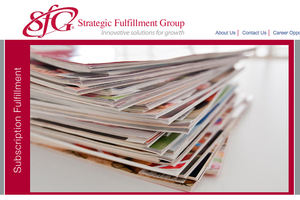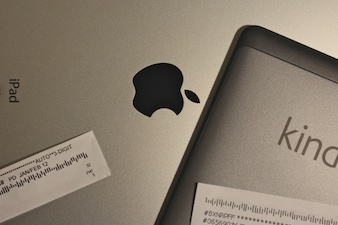Buying that new iPad, Kindle or Nook for Christmas is just the first step to becoming a digital magazine reader. While shopping for books and movies is a fairly straightforward process, getting your favorite magazines onto your new e-reading device can be trickier.
The ways you can buy a magazine are rapidly multiplying, making it harder for readers to evaluate their choices. Major magazine publishers, digital newsstands and magazine customer service companies are trying to simplify the process of setting up digital magazine subscriptions, but so far, it’s still sometimes a confusing process. Here’s one strategy to get your digital magazine subscriptions set up for e-reading enjoyment.
Check Subscription Expiration Dates
It’s helpful to know when your print magazine subscriptions expire if you really want to switch fully to digital-only subscriptions. If you have only one or two print issues left, you might wait until the print subscription ends to sign up for a new digital-only subscription, if that’s offered by the publisher. The reason for delaying the move is that the “midstream” print-to-digital subscription switch is challenging for publishers right now. Some magazines can immediately convert your subscription to digital and stop your print issues from arriving in the mail; some can’t.

Zinio, one of the major newsstands for digital magazine subscriptions on iOS and Android, is developing a way to make this conversion easier, but it’s still in the works.
“For example, if you had Men’s Fitness and you wanted to switch it midstream, you would let Zinio know, and Zinio would contact the publishers to handle it for you,” said Jeanniey Mullen, Zinio’s global executive vice president and chief marketing officer.
Mullen said magazine publishers might model this process on Canada’s epost service, which provides a centralized location for consumers to request e-bills instead of paper bills from a variety of billers.
For now, don’t count on being able to immediately go all-digital for your existing magazine subscriptions. Depending on the magazine’s policies, you may be better off waiting until the end of an existing print subscription, or may have to continue the print subscription to get digital access. You may also find that some of your favorite publications don’t even have digital editions yet.
Investigate Your Options
When you’re ready to pursue digital subscriptions, your first step should be to review — thoroughly — each magazine’s website. Information about digital editions and magazine apps can sometimes be hard to locate, so rather than sifting through the magazine’s website, opt for a Google search for its title and “digital edition” or “tablet edition.”

“Over time, I’d like to see a standard way of communicating what formats are available and a standard way of getting to them,” said Tony Pytlak, president and chief operating officer of Strategic Fulfillment Group, which provides fulfillment services to a number of magazine publishers. “Right now, even a lot of the newsstands that are coming out don’t provide things clearly.”
You might find that you can access a digital edition for free as a perk of your existing print subscription. For example, subscribers to the print editions of The New Yorker or Wired can immediately get access to their tablet editions for free. Later, when you renew your subscription, you might seek a digital-only option if you find you’re enjoying the digital editions more than print.
Publishers are experimenting with package deals, meaning offerings will vary widely among different magazines.
“Our publishing partners are trying to find, for their unique audience, what’s the right combination of print/digital, at what price points — and what does a subscriber to one or the other, or both, actually have access to,” Pytlak said.
SFG gathers customers’ responses to various print and digital subscription package deals in its database so that publishers can analyze their success. “If you’re going to test print only, or digital only, at one price or another, or digital at a slightly higher upsell, capturing the customers’ responses to those kinds of offers will help our partners understand them,” Pytlak said.
Some magazines have chosen dedicated apps as their only digital content option (other than their websites). That means you’ll have to visit the app store for your device (such as the iTunes Store) to download the app, and then likely will purchase the subscription to the magazine’s content through the app. You’d then revisit the app on your device to access new content as it’s made available.
Additionally, some magazines’ digital editions are offered through a newsstand-type app like Zinio, which serves as a storefront for digital magazines. Amazon also sells digital subscriptions for Kindle devices through its Kindle Store, just as Barnes and Noble does on its website for the Nook.
Make the Switch
Once you know what subscription choices a magazine offers, you can either attempt to switch your print subscription to digital by using the magazine’s website, if that’s an option available online, or — more likely — you’ll need to call customer service to get help.
“The best proactive approach is to contact the publisher directly, and let them know what they’re trying to transfer to digital, and let them know what digital platform,” said Zinio’s Mullen. “If they’ve got an iPad, they can say, ‘I want to transfer my print subscription to the digital version you have on [the iTunes] Newsstand’ … It will be extremely helpful for the customer service team to know that.”
Still, there’s no guarantee that customer service representatives will be able to help you. Pytlak said your success may differ from publisher to publisher.
“It varies in how they let their service providers help them,” Pytlak said. “Some service providers are not able to handle the transition from print to digital. It’s a function of the publisher and the service provider working together to sync those things up and make it easy for the customer to do that.”
Form a Digital Magazine Habit
Once you’ve successfully made the switch to digital subscriptions, it can be hard to remember that you have new issues to read without the physical reminder of a new issue arriving in the mail.
Some magazine and newsstand apps will provide a notification on your device that a new issue is available to read. Those notifications can pile up and become easy to ignore, however. If notifications aren’t available, you’ll have to remember to reopen the app and see what’s new. It can be easy to forget about apps, especially considering app users’ habits: 26 percent of apps downloaded are never opened again after their first use. If you’re paying for a subscription, though, your motivation to revisit an app might be higher.
Some magazines’ digital editions will give you the option of receiving an email notification whenever a new issue is available, which — depending on your email habits — might be a more effective reminder to read your magazine.
Improving the Process
Clearly, making the switch from print to digital magazine subscriptions isn’t always an easy process. And not everyone is choosing to switch completely just yet.
“I’d call it a shift in consumers’ media habits, but not necessarily a transition from print to digital,” Pytlak said. He said today, SFG receives more requests from readers to change subscriptions “either print to print, or print to digital and print, more so than print to digital.”
Mullen said that rather than just converting existing print subscriptions, many new e-reader users are trying out magazines that are new to them, especially when promotional offers are available.
“They’ll buy a single issue of a magazine they’ve never bought in print before,” she said. Additionally, using Zinio, “a very high percentage of people will subscribe to magazines they’ve never subscribed to in print.”
Both Pytlak and Mullen say that standardization of print and digital subscription management is necessary both to make subscribers’ lives easier and to improve publishers’ ability to gather and analyze data about their subscribers.
“I see 2012 as a big year of change around subscription management on the back end and in fulfillment processing,” Mullen said. “It’s a very consumer-oriented challenge that we all need to address. A lot of publishing houses are interested in making the midstream switch as easy as possible. The lack of standardization is really the challenge, and where I think we will see advancement in 2012.”
Susan Currie Sivek, Ph.D., is an assistant professor in the Department of Mass Communication at Linfield College. Her research focuses on magazines and media communities. She also blogs at sivekmedia.com, and is the magazine correspondent for MediaShift.

